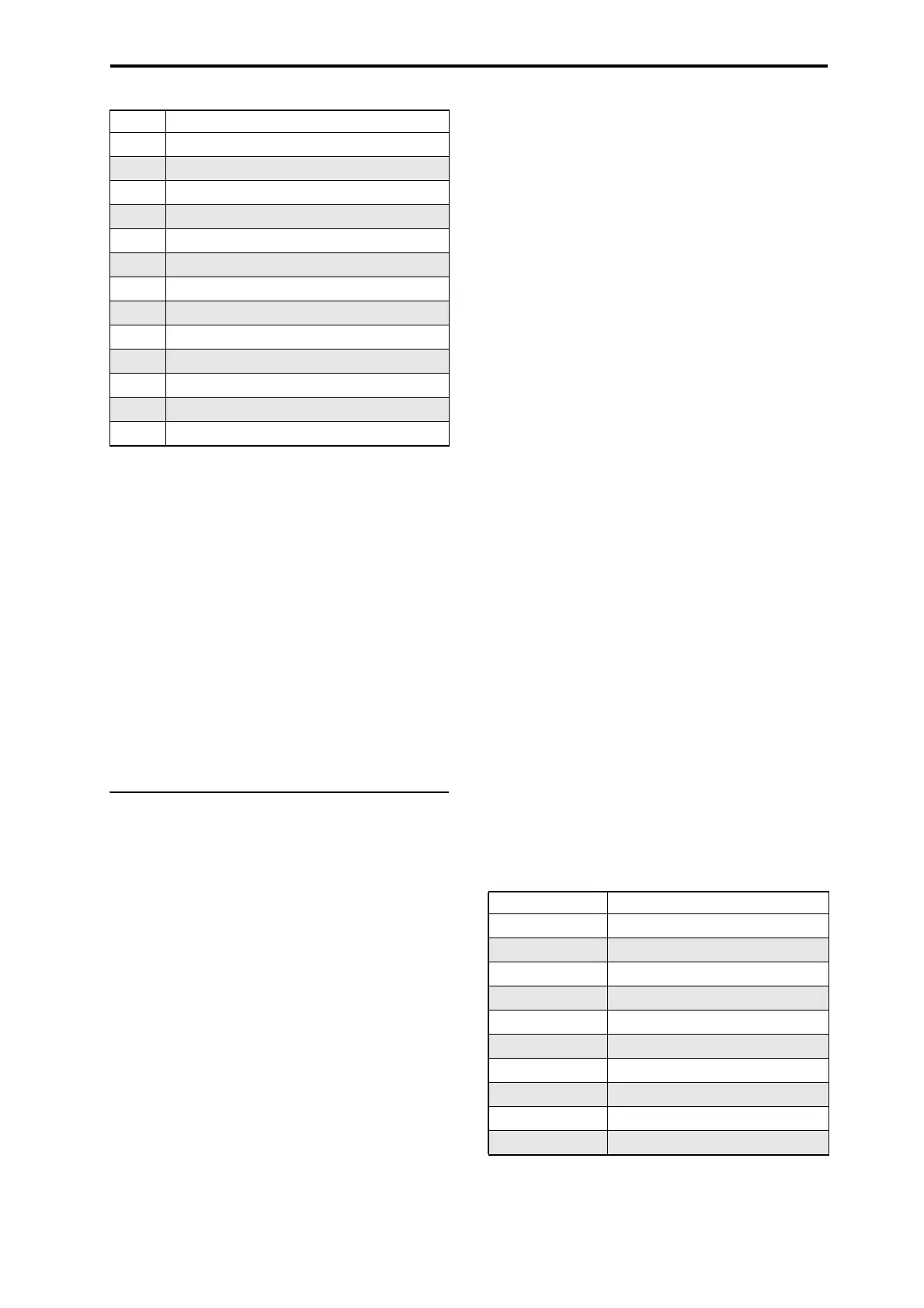PROGRAM > MOD-7: Oscillator 5–3: PCM Mod
323
AMS1 Int. Mod [List of AMS Sources]
You can modulate AMS 1’s Intensity from another AMS
source. This selects that source.
Intensity [-48.00…0.00…+48.00]
This controls the depth and direction of the Intensity Mod
AMS, in semitones. The result is summed with the main
AMS 1 Intensity to produce the final pitch modulation
amount.
AMS2 [List of AMS Sources]
This selects a second modulation source for controlling the
oscillator’s pitch. For a list of AMS sources, see “Alternate
Modulation Source (AMS) List” on page 901.
Intensity [-48.00…0.00…+48.00]
This controls the depth and direction of the AMS 2 pitch
modulation, in semitones.
5–3b: Keyboard Track
The PCM Oscillator has its own keyboard tracking, which is
dedicated to modulating the Output Level as you play up
and down the keyboard. This can be especially convenient
when using PCM as a modulator for a VPM Oscillator.
For more details on these parameters, see “5–4d: Keyboard
Track” on page 331.
How it works: Keys and Ramps
The keyboard tracking works by creating four ramps, or
slopes, between five keys on the keyboard. The bottom and
top keys are fixed at the bottom and top of the MIDI range,
respectively. You can set the other three keys–named Low
Break, Center, and High Break–to be anywhere in
between.
The four ramp values control the rate of change between
each pair of keys. For instance, if the Low-Center Ramp is
set to 0, the value will stay the same between the Low Break
key and the Center key.
You can think of the resulting shape as being like two
folding doors attached to a hinge in the center. At the Center
key (the main hinge), the keyboard tracking has no effect.
The two folding doors swing out from this center point to
create changes in the higher and lower ranges of the
keyboard.
Key
Low Break [C–1…G9]
This sets the breakpoint note between the two lower ramps–
the “hinge” of the lower door.
Center [C–1…G9]
This sets the center of the keyboard tracking–the main
“hinge.” At this key, the keyboard tracking has no effect on
the volume, or on any AMS destinations.
High Break [C–1…G9]
This sets the breakpoint note between the two higher ramps–
the “hinge” of the upper door.
Entering notes from the keyboard
You can enter note numbers directly by playing them on the
keyboard. To do so:
1. Select one of the Key parameters.
2. Hold down the ENTER key.
3. While holding ENTER, play a note on the keyboard.
Ramp
Bottom-Low [–Inf, –99…+99, +Inf]
This sets the slope between the bottom of the MIDI note
range and the Low Break key. For normal key track, use
negative values.
Low-Center [–Inf, –99…+99, +Inf]
This sets the slope between the Low Break and Center
keys. For normal key track, use negative values.
Center-High [–Inf, –99…+99, +Inf]
This sets the slope between the Center and High Break
keys. For normal key track, use positive values.
High-Top [–Inf, –99…+99, +Inf]
This sets the slope between the High Break key and the top
of the MIDI note range. For normal key track, use positive
values.
Ratio Pitch in semitones
1Root pitch
2 +12.00
3+19.01
4 +24.00
5+27.83
6 +31.03
7 +33.44 -- 2 octaves + minor seventh (-56 cents)
8 +36.00
9 +38.09 -- 3 octaves + whole tone (+9 cents)
10 + 39.65 -- 3 octaves + major third (-35 cents)
12 +43.06 -- 3 octaves + fifth (+6 cents)
15 +46.50 -- 3 octaves + major seventh (-50 cents)
16 +48.00
Ramp Change in level
-Inf Silent in one half-step
–99 Silent in one whole-step
–95 Silent in one octave
–48 Silent in two octaves
–25 Silent in four octaves
00 no change
+25 x2 in four octaves
+50 x2 in two octaves
+99 x2 in one octave
+Inf x2 in one half-step

